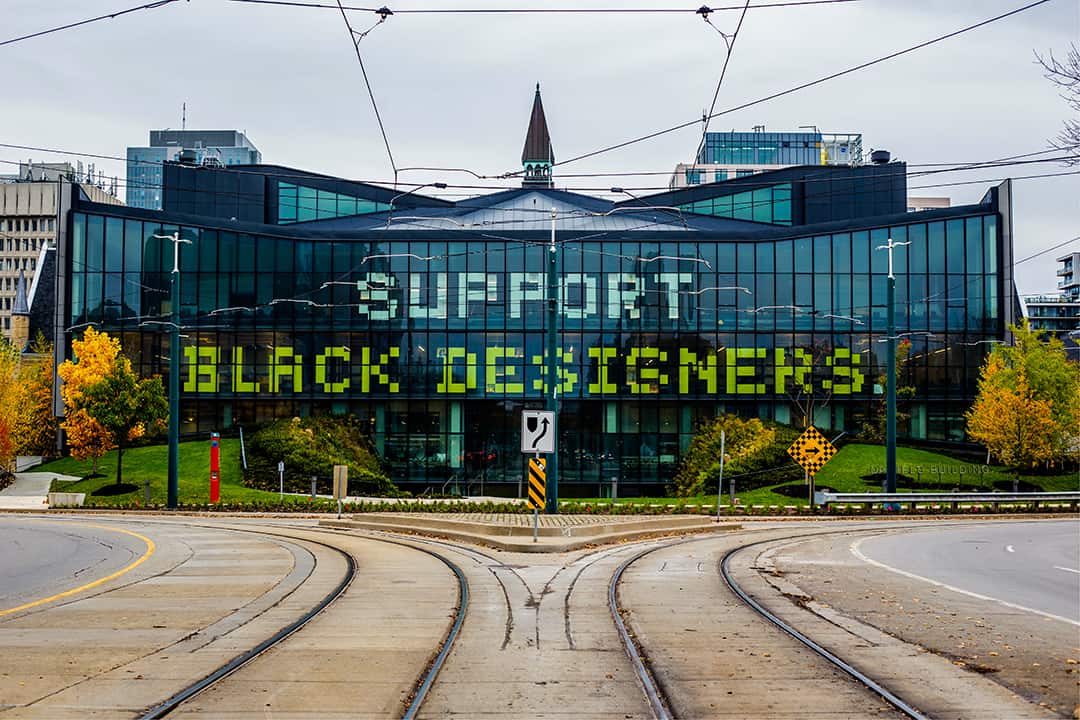Located right in the centre of Spadina Crescent, the John H. Daniels Faculty of Architecture, Landscape, and Design at the University of Toronto is hard to miss. Even harder to miss is its recent addition to the north facade: a large mural made of ‘pixels,’ — individual poster-sized sheets of artwork and writing — spelling out the words “SUPPORT BLACK DESIGNERS.”
I conducted a written interview about the mural with Tolu Alabi and Ashita Parekh, the designers of the project, and Tarek Mokhalalati, a curating executive of the Daniels Art Directive (DAD) 2020–2021 team. Parekh and Alabi are both alumnae of the Daniels Faculty, currently working in Toronto, and Mokhalalati is a fifth-year undergraduate student at Daniels.

Race is a border that anyone who is part of a racialized group has to overcome, no matter what field they choose to pursue. This has become increasingly evident in recent years, especially with the recent establishment of the term ‘BIPOC’ — which stands for Black, Indigenous, and people of colour — and the rise of the Black Lives Matter movement. Design and architecture are no exception.
“The team understands that a mural does not do justice to address the various lived experiences and discrimination that Black creatives face, especially in the education system,” Alabi wrote. “However, we hope this mural will call to action all members of the public and institutions to create lasting reformation in the academic and corporate fields.”
![]()
This massive project was spearheaded by the DAD, which Mokhalalati described as “an art collective for all thinkers, dreamers, and doers from any discipline and skill level.” He added that the DAD “[hosts] art projects and events where members can showcase their work, strengthen their portfolios, and network with fellow artists,” valuing growth, creativity, and diversity to support others.
“DAD’s original proposal was for a poster campaign aimed at giving cool tips and facts about the faculty building,” Mokhalalati wrote. A series of designed posters were proposed in January. However, the COVID-19 pandemic delayed this project, and according to Mokhalalati, the project advisors suggested publishing the posters on social media and planning “a more ambitious, community-based project to be executed physically.”
At that time, the new DAD executive team joined to pursue that objective. “Our original motivation for the revamped project was the pandemic and the massive changes in all aspects of life that it created, but then it shifted when there were voices emerging from the faculty in June from students and alumni calling for changes in the faculty and how it addressed anti-black racism both practically and pedagogically as an institution,” Mokhalalati wrote.
“We realized that the mural we wanted to make would bring a lot of attention towards the faculty itself, so… we had a responsibility to make sure that the mural would echo the sentiments of marginalized students at the faculty.”
The project was opened up to the Daniels community in a special voting process for the winning proposal. According to Mokhalalati, the DAD “felt this approach would achieve [its] goal of echoing what the faculty itself wanted to see, and it was a mural that addressed the nature of the space that the faculty provided black designers.”
He continued, writing that the mural’s location on the north facade of the Daniels Faculty building “gave [the DAD] a unique opportunity to showcase [an important message on] one of Toronto’s most unique urban landscapes.”
![]()
Originally, Parekh and Alabi brainstormed the phrase “RECOGNIZE BLACK DESIGNERS,” but they realized that “Black designers do not need to be recognised by a higher authority, because they are already recognised by the public; they need to be recognised and celebrated by institutions.”
Parekh and Alabi then submitted the design “CELEBRATE BLACK DESIGNERS” and won by a community vote. This phrase was chosen because Parekh and Alabi thought “it would only be appropriate to use that space and platform to amplify marginalised voices and experiences.” After winning, the team consulted with Black students at the faculty and U of T, who suggested the phrase change to “SUPPORT BLACK DESIGNERS.”
“It is only if you support Black designers with the right opportunities and tools, that you actually celebrate them,” Parekh wrote.
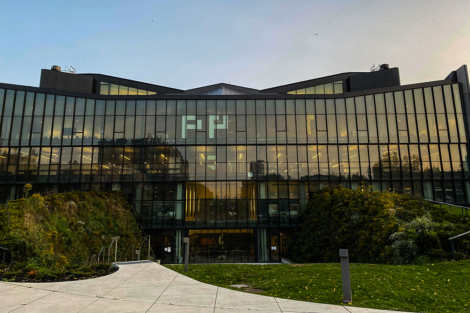
The DAD reached out to various groups for help and sponsorship, including Vistaprint, which provided all the paper pixels and printed works, as well as masks for the volunteers who built the mural. The directive also reached out to students, alumni of the faculty, family, and friends to submit illustrated or written work to be featured in the mural.
To further illustrate the borders that Black designers face, Alabi noted that, of the submissions, “only 20% were from Black people.” This disparity was shocking to me. Ultimately, the designers chose to use only the work submitted by Black people.
“We appreciate all the support from allies of the Black community, but this project was about amplifying the voices of Black people in design and if we had used all the submissions it would have taken away from the message,” Alabi wrote.
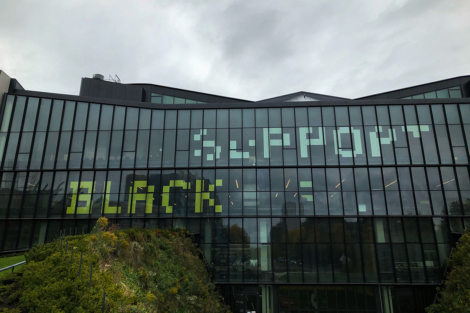
This project is still ongoing, planning to finish in February 2021. This timeline is unusually long; however, Mokhalalati wrote that the DAD “wanted to make sure that what [it was] creating and the manner in which [it] created it was appropriate, and [the DAD] prioritized community outreach and discussions with various student groups.”
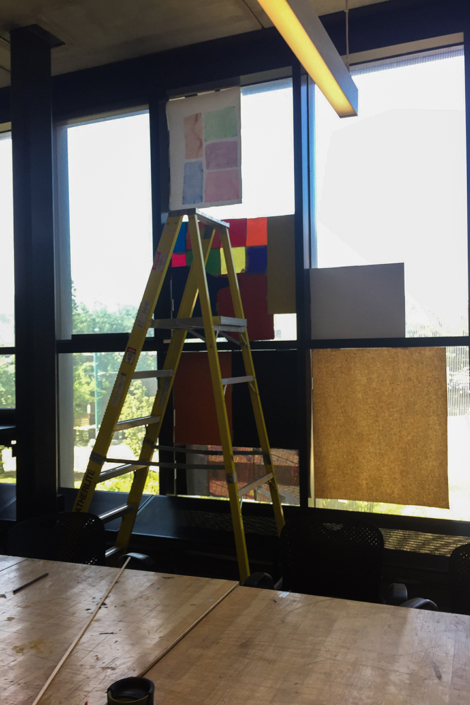
From this project, Alabi hopes to see the implementation of courses that “highlight the benefits that Black creatives and designers have brought to the design industry” in order to provide “both Black Students and Non-Black students the opportunity to explore areas of design education that are beyond the current heavily eurocentric focused system.”
Alabi added that she would like to see “a design education that is also reflective of the entire story, and acknowledges the reality of marginalised groups that are displaced as a result of ‘ground-breaking’ architectural projects or movements.” She also wants “a faculty that is diverse and a system that is set in place to check and ensure that the faculty is diverse while also providing equitable opportunities for staff (from marginalised groups) to advance within the faculty.”
Mokhalalati wrote that “[Amplifying designers and contributors’] voices is part of [the] goal at the Daniels Art Directive, which is to support and help artists to grow and provide them the spaces and opportunities to do so.”
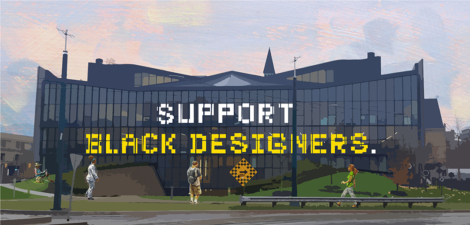
Looking to the future, Mokhalalati hopes for the DAD to achieve an equally — if not more — ambitious annual project next year, as well as “a smaller scale, community-based project.”
“The DAD team is very grateful for the amazing communities at the Daniels faculty and at UofT and we hope to continue making exciting projects in collaboration with these wonderful communities in the future.”
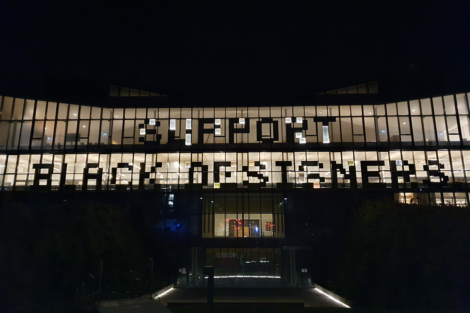
All photos courtesy of Guershom Kitsa and the Daniels Art Directive.

